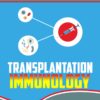The increase in aquaculture operations world-wide has provided new opportunities for the transmission of aquatic viruses and bacteria and the occurrence of diseases remains a significant limiting factor for aquaculture production and for the sustainability of biodiversity in the natural environment. Fish diseases are demarcating one of the roles as an anticipatory factor in fish production and instigating heavy mortalities especially in hatcheries thus affecting profit negatively. Both researchers and farmers in Aquaculture area are looking for a ways to get maximum amount of yield from per unit volume of water to lower the coast in aquaculture operations. The growing global demand for seafood together with the limited capacity of the wild-capture sector to meet this demand has seen the aquaculture industry continue to grow around the world. A vast array of aquatic animal species is farmed in high density in freshwater, brackish and marine systems where they are exposed to new environments and potentially new diseases.
This novel guide integrates up-to-date information about the major bacterial and viral pathogens of notable fish species; reviews major well-established fish pathogens as well as new, evolving and notifiable diseases; and covers the latest research contributed by world renowned authors and researchers. The chapters mainly focus on the epidemiology, prevalence, distribution, transmission, physiopathology, clinical signs, diagnosis, prevention, control strategies, legislative aspects and economic impact of bacterial and viral diseases of fishes. For this purpose peer reviewed scientific articles, theses and dissertations, convention proceedings, government records as well as recent books, were used as a source to compile dispersed literature.













